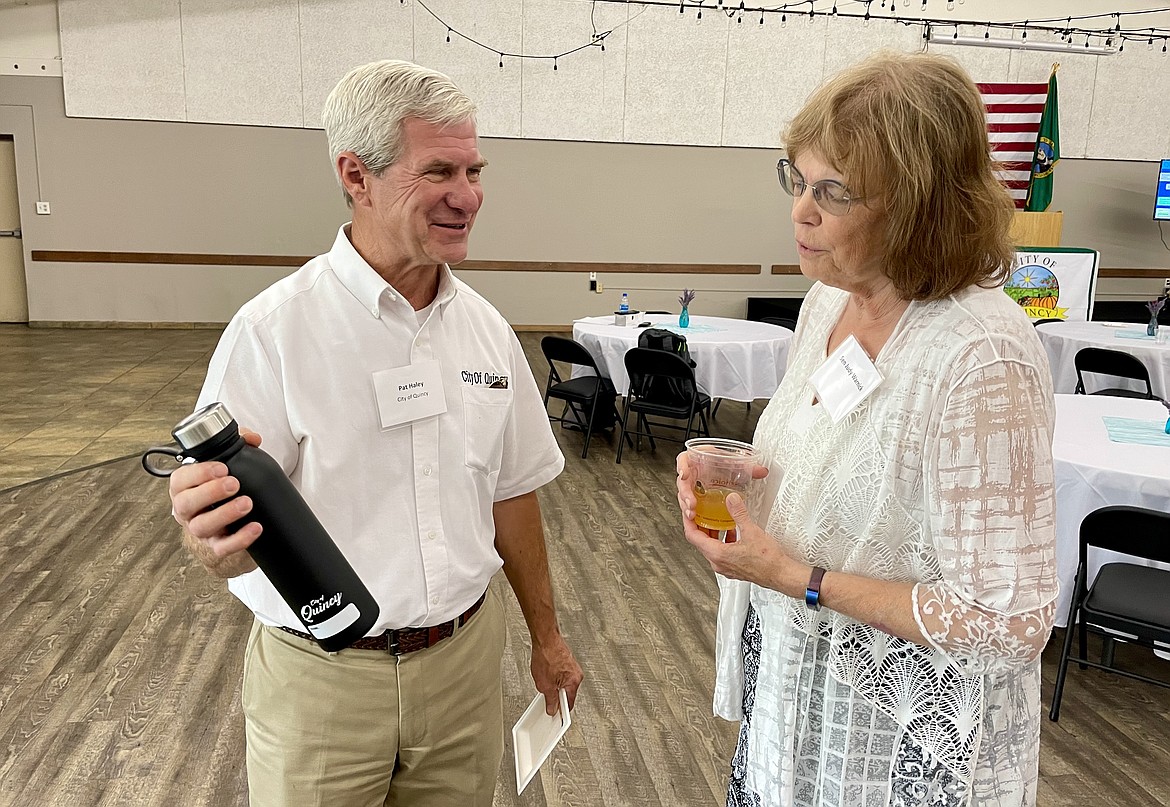Fighting to save every drop of water
QUINCY — “Whiskey is for drinking, and water is for fighting.”
Allegedly the words of Mark Twain, they were echoed by Quincy City Administrator Pat Haley on Wednesday at the end of a short ceremony at the Quincy Valley Business and Conference Center to inaugurate the city’s industrial wastewater reuse system.
Because a small city like Quincy, home to water-intensive food processors and data centers alike, needs to find a way to make the most of a scarce resource in what is effectively a desert.
“It’s not unique here,” Haley said. “Anywhere in eastern Washington is going to be challenged with the same water resources.”
Construction of the industrial wastewater treatment system was begun by Redmond-based software giant Microsoft in 2007, when the company first located here, and took 14 years and “tens of millions” of dollars to finish, Haley said.
Haley wouldn’t give an exact cost, since most of it was paid for by Microsoft and is “confidential information.”
“It’s a big project, the first of its kind in Washington state,” he said. “You have to be a data center to have something like this, so it could be one of the first of its kind anywhere in the United States.”
According to Bob Davis, a project manager with Australia-based worldwide engineering firm Worley, which oversaw construction of wastewater reuse system, the city of Quincy uses around 2.2 billion gallons of water — nearly all of it pumped from aquifers deep below ground — in a typical year.
That’s the amount of water used by 30,000 people in a year — a lot of water for a town with a population of only 8,200, Davis said.
“So what happens is 50%-60% of that goes to food processing operations here, which is an integral part of the economy of Quincy,” he said. “30%-35% of that is residences and other commercial facilities. 10-15% of that then is data center water.”
Data centers use that water for cooling. Much of that water evaporates, concentrating a lot of salt, as well as metals and minerals in the water that’s left. The industrial wastewater reuse system filters all of that out in a complex process in three scattered facilities connected by 35 miles of pipes and allows the water to be completely reused, creating a “closed loop.” Water will be added to the system from either city wells or as “makeup water” from the West Canal, which carries water primarily to farmers as part of the Columbia Basin Project.
“This year, we’re going to be able to replace enough water with makeup water or reuse water for about 5,000 residents for a year,” Davis said. “That’s a fairly good thing.”
Currently, only Microsoft is served by the water reuse system. The city council passed an ordinance requiring all of the other data centers in town to eventually connect, but doing so would require both expensive connections and a costly expansion of the system’s capacity.
According to city engineer Ariel Belino, connecting Sabey’s Quincy data centers would cost $20 million for the piping alone.
Which means, as Haley noted, while city officials can take a short breather and celebrate the completion of this project, the work of maximizing the city’s water resources and trying to use every drop as efficiently as possible has only begun.
Eventually, Haley said the city would like to find a way to treat and reuse the wastewater generated by the city’s food processors — which has its own separate waste treatment system — and eventually the wastewater that comes from Quincy’s 8,200 residents.
“That’s the goal,” he said. “Don’t throw this water down the drain.”
Charles H. Featherstone can be reached at cfeatherstone@columbiabasinherald.com.



